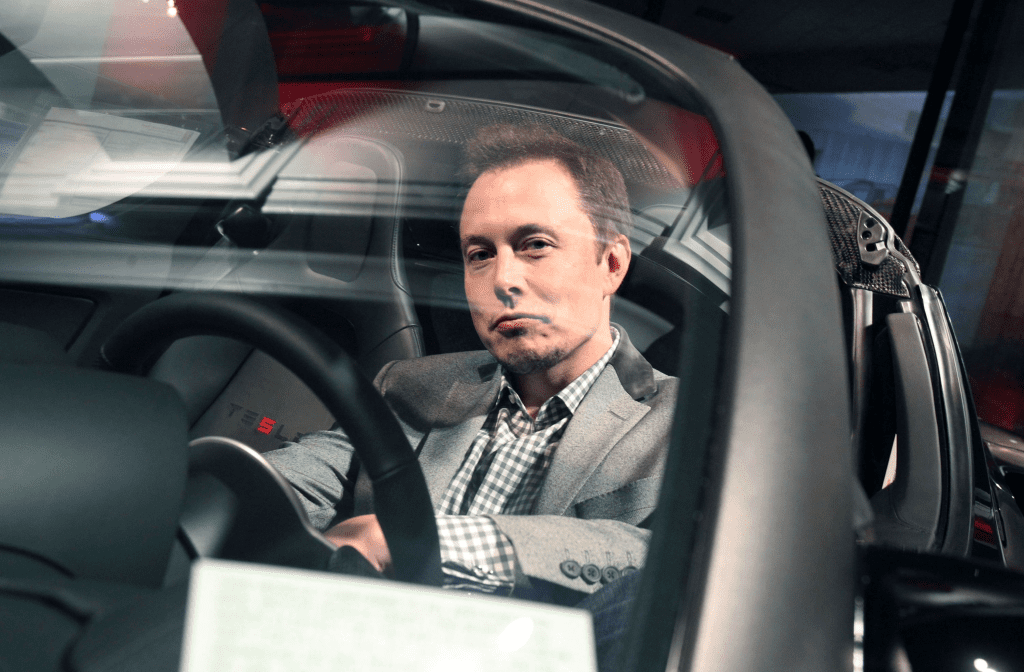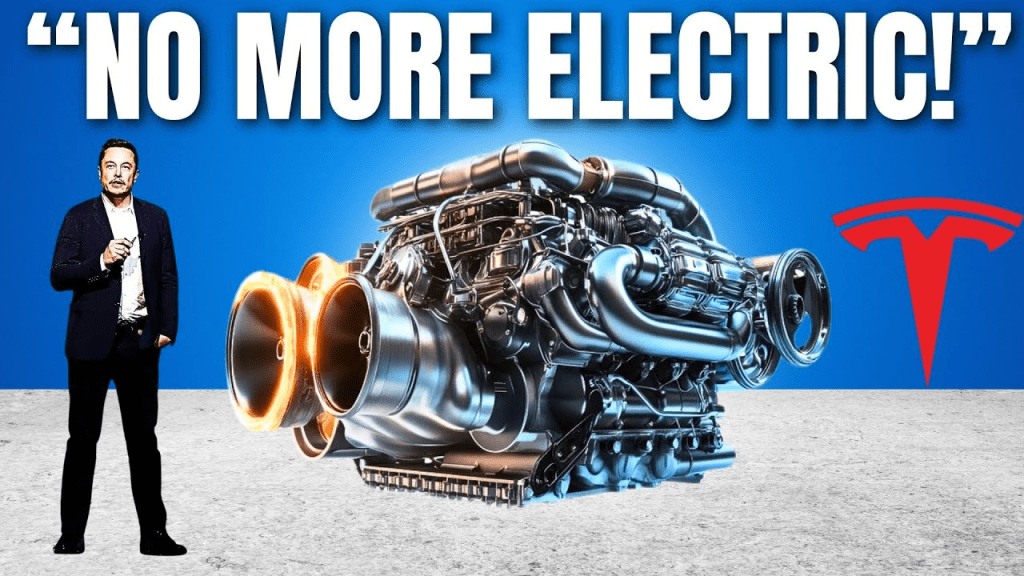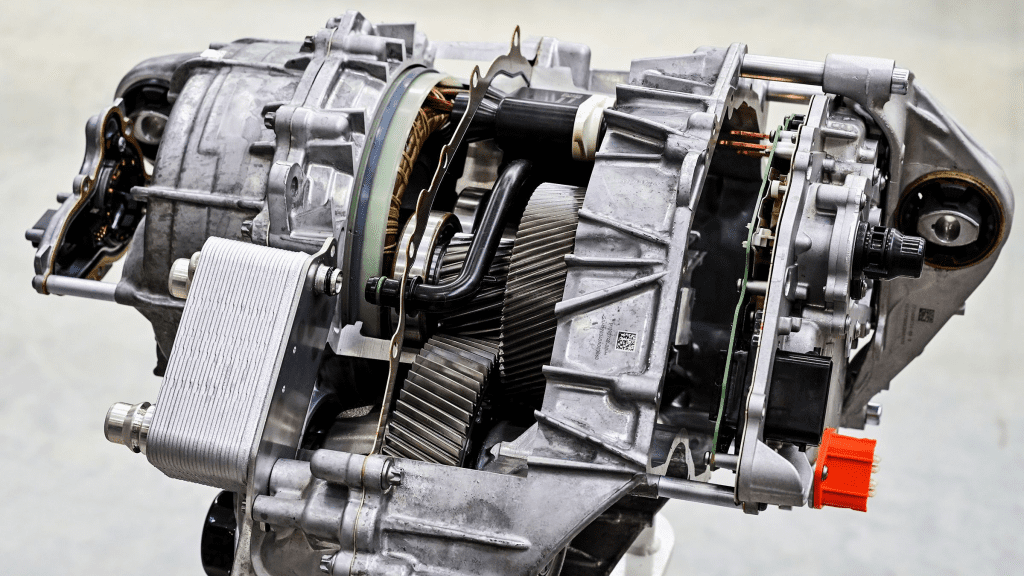
In a groundbreaking move that could reshape the future of transportation, Elon Musk has unveiled an entirely new type of engine for vehicles: the water-powered engine. This revolutionary technology has the potential to not only change the automotive industry forever but also address one of the most pressing environmental challenges of our time—climate change.Musk’s innovation could drastically reduce the world’s dependence on fossil fuels, cut down carbon emissions, and provide a sustainable alternative to the current methods of powering vehicles.
Elon Musk’s revolutionary water-powered engine has generated immense excitement, offering a cleaner, more sustainable energy source for transportation. This innovative technology extracts hydrogen from water, which then fuels the vehicle, releasing only water vapor as exhaust. Musk’s breakthrough is considered a game-changer, combining environmental benefits with the power and efficiency necessary for modern vehicles. Musk has also estimated that this water engine could generate up to $500 billion annually for the global automotive industry. This article will explore the mechanics of Musk’s water-powered engine, its environmental advantages, and the profound implications for the automotive industry and the global economy. If Musk’s vision comes to fruition, it could fundamentally transform both the automotive sector and the planet.
Elon Musk has long been an advocate for sustainable energy solutions, pushing the boundaries of electric vehicles (EVs), solar energy, and energy storage through Tesla. Now, with the water-powered engine, Musk is taking his mission to reduce global dependence on fossil fuels to an unprecedented level. By extracting hydrogen from water, this engine provides an almost limitless energy source for vehicles, all without the harmful emissions associated with traditional combustion engines.
The technology behind the water-powered engine is relatively simple but groundbreaking. Water (H2O) consists of two hydrogen atoms and one oxygen atom. Through electrolysis, the hydrogen molecules are separated from the water and stored. This hydrogen is then used to power the engine, with water vapor as the sole byproduct. Unlike conventional gasoline or diesel engines, which emit harmful carbon dioxide (CO2) and other pollutants, the water engine produces no harmful emissions, offering a completely clean alternative.
While hydrogen-powered vehicles have existed in some form, Musk’s innovation lies in the ability to extract and use hydrogen from water in a more efficient and cost-effective way. Previous hydrogen fuel systems were expensive and difficult to scale, but Musk’s breakthrough technology could make the water-powered engine a viable and competitive alternative to traditional combustion engines.
The environmental advantages of the water-powered engine are significant, particularly in reducing carbon emissions and addressing climate change. The transportation sector is one of the largest contributors to greenhouse gas emissions, with millions of vehicles worldwide emitting CO2 and other pollutants daily. Musk’s water engine presents a solution, producing no harmful emissions and offering the potential to reduce transportation-related emissions by up to 90%. This would drastically reduce the global carbon footprint, supporting efforts to meet the climate targets outlined in the Paris Agreement and mitigating the worst effects of global warming.
Additionally, the shift to water-powered vehicles would reduce the reliance on fossil fuels, diminishing the environmental damage caused by oil extraction, refining, and transportation, including oil spills and deforestation. By adopting water as a fuel source, the automotive industry could significantly reduce its negative environmental impact.

Beyond environmental benefits, the water-powered engine has enormous financial potential. Musk estimates that this technology could generate $500 billion annually, benefiting both car manufacturers and the global economy. This massive profit potential stems from cost savings and new revenue opportunities. Traditional internal combustion engines rely on costly fossil fuels, while the water-powered engine, fueled by abundant and inexpensive water, could drastically lower operating costs for consumers and businesses. Moreover, the reduction in fossil fuel subsidies would lessen the financial burden on governments.
The water-powered engine also opens up new markets for companies involved in hydrogen production, electrolysis technology, and fuel cell manufacturing. The establishment of clean energy infrastructure, such as water refueling stations and hydrogen production plants, could create a multibillion-dollar industry. Furthermore, the widespread use of water-powered vehicles would increase the demand for new energy storage and distribution systems, further boosting economic growth.
For automakers, transitioning to water-powered vehicles could be highly profitable, and Tesla, as a leader in electric vehicles and clean energy, stands to benefit significantly. Tesla has already demonstrated its ability to innovate and scale new technologies, and Musk’s water engine could be the next step in revolutionizing the automotive industry.

However, there are challenges to overcome before the water-powered engine can be widely adopted. One of the primary obstacles is the infrastructure needed to support water-powered vehicles. Unlike electric vehicles, which can be charged at home using the existing electrical grid, water-powered cars will require a network of refueling stations capable of extracting and storing hydrogen. Building this infrastructure will require significant investment from both private companies and governments.
Another challenge is the cost of manufacturing the water-powered engines. While water is inexpensive and abundant, the technology needed to extract and store hydrogen from water remains relatively costly. Tesla and other companies will need to continue refining the technology to make it more affordable and scalable. Nevertheless, Musk’s proven track record of overcoming technical challenges with Tesla and SpaceX suggests that he is well-equipped to address this issue.
There are also regulatory and safety concerns surrounding the use of hydrogen as a fuel source. Hydrogen is highly flammable, and its storage and transportation require special precautions. Governments will need to develop new safety standards and regulations for the production, storage, and use of hydrogen in vehicles. However, Musk’s experience in navigating regulatory environments means he is likely to work closely with lawmakers and industry experts to address these concerns.

The introduction of the water-powered engine marks a pivotal moment for the automotive industry. If successful, Musk’s innovation could reshape not only how we power vehicles but also our broader approach to energy consumption and sustainability. With the potential to eliminate harmful emissions and provide a cost-effective, renewable energy source, water-powered vehicles could significantly impact the world.
Looking ahead, the water engine could play a central role in the future of transportation. As the technology matures and more automakers adopt it, the global transportation sector could shift away from fossil fuels toward cleaner, sustainable energy sources. The environmental, financial, and technological potential of Musk’s water-powered engine makes it one of the most promising developments in the fight against climate change.

In conclusion, Elon Musk’s water-powered engine represents a bold and groundbreaking step toward sustainable, eco-friendly transportation. By harnessing water’s abundant resources, Musk’s innovation could have far-reaching implications for the automotive industry, the global economy, and the planet. Although challenges remain, the potential rewards are enormous, and the future of transportation has never looked brighter.


